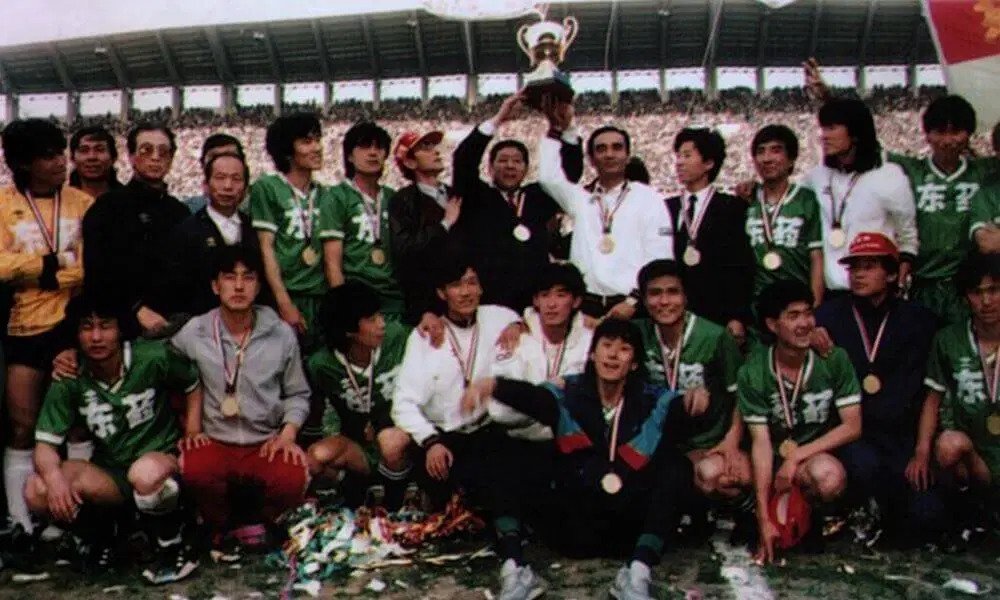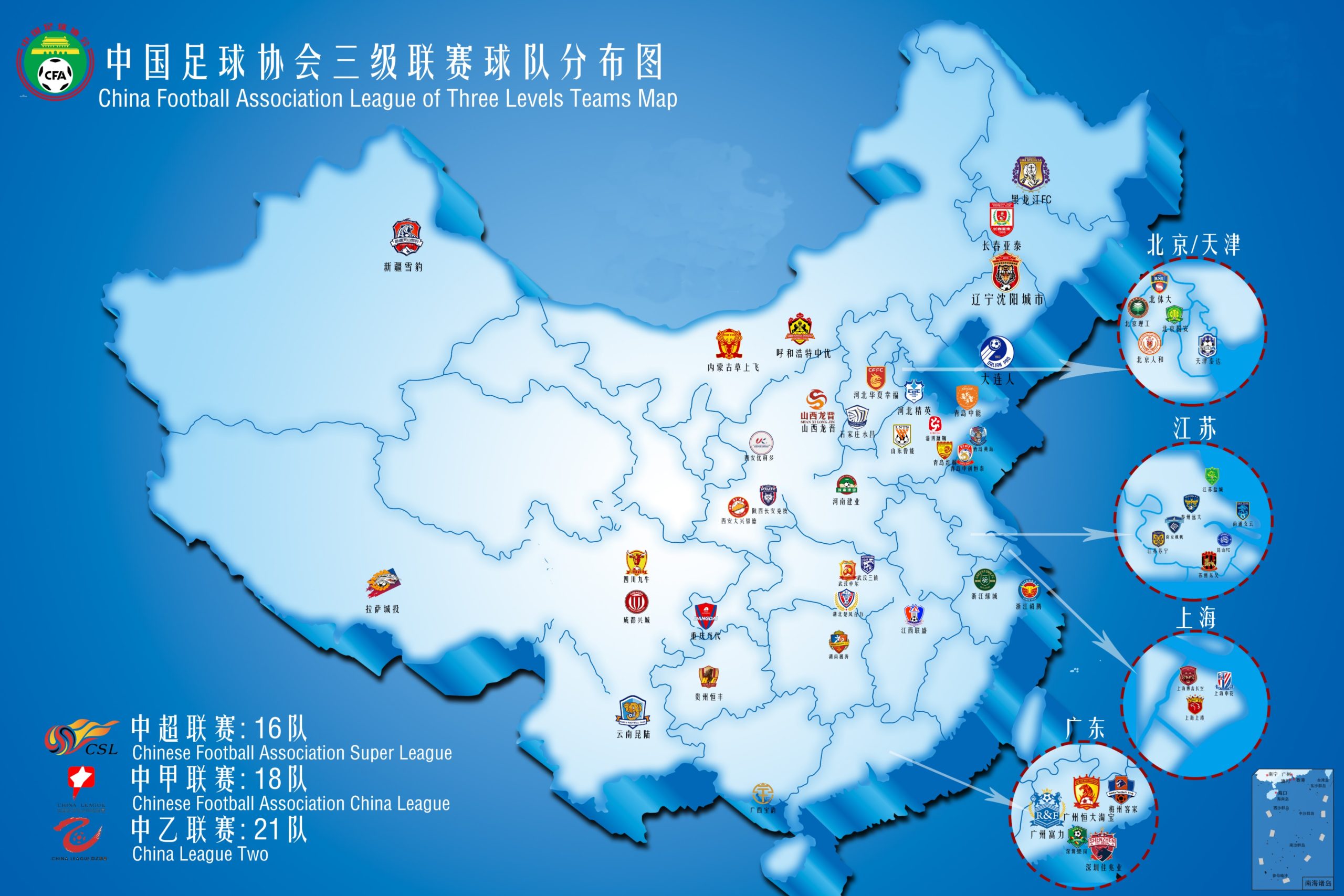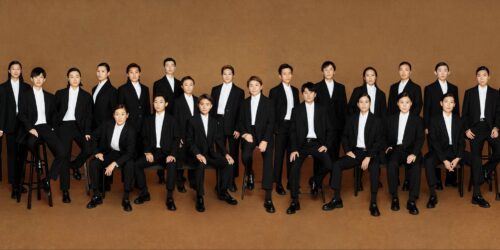Chinese soccer’s financial woes: 11 teams disqualified, including former Asian champion Liaoning FC
In this week's edition of the China Sports Column, Gerry Harker details the woes of the Chinese Football Association, which announced that 11 of the country's 64 professional soccer teams have been disqualified from competition due to financial difficulties caused by lavish spending and COVID-19 pressures.

The China Sports Column is a The China Project weekly feature.
China’s professional soccer league system — which includes the Chinese Super League, China League One, and China League Two — will be without more than a fifth of its teams for the upcoming season, which still hasn’t begun due to COVID-19.
On Saturday, the Chinese Football Association (CFA) announced that 11 of the country’s 64 professional soccer teams have been disqualified from competition due to financial difficulties caused by lavish spending and COVID-19 pressures. Four competed in League One last year, and seven competed in League Two.
CFA president Chen Xuyuan has voiced his concerns on the financial sustainability of professional clubs several times since his inauguration last year. “Our clubs can barely achieve sustainable development. The owners have invested a lot but earn little back, and this could be detrimental to Chinese football.”
“We hoped that clubs at all levels could pay attention to long-term planning and rational management, so they can protect the legitimate rights and interests of players, coaches and staff, and therefore promote professional football to achieve sustainable development,” the Chinese football governing body noted in an announcement on Saturday.
Five additional clubs have folded on their own in recent months, including Tianjin Tianhai, the highest-profile club to collapse, after it could not pay its players.
But perhaps the biggest club to disappear is Liaoning FC.
Liaoning FC had been the Guangzhou Evergrande of the ’80s and early ’90s, stringing together a run of 10 domestic titles between 1984 and 1993. It became the first team from China to claim an Asian title when it won the Asian Club Championship in 1990.
Liaoning struggled financially after the advent of the professional soccer system in China in 1994. A rough 10-year spell between 1995 and 2005 saw the team slide down the league system, until it was bought by the Hongyun Group in 2006.
The Hongyun Group brought stability to the club, which continued to run at a loss but was supported by the wealth of their backers. However, the club’s finances worsened last year due to rising player costs. For example, the club bought Nigerian international Anthony Ujah for a club record $15 million, but after relegation, the club was forced to sell the player for just $4 million.
The loss of revenue coupled with COVID-19 spelled the end of the historic club.
But soccer will happen this year (most likely, anyway; teams are currently training and playing friendlies, locked in an endless preseason). Per usual, 16 sides will make up China’s top league, the Chinese Super League, with previously relegated Shenzhen replacing the now-defunct Tianjin Tianhai.
League One will see its number of clubs increase from 16 to 18 with the inclusion of last year’s best League Two clubs.
The formerly 32-team League Two has been reduced to just 21 — but this includes five clubs that were promoted from the amateur ranks. Two teams that were slated for promotion to League Two decided to backtrack and remain semi-pro.

The collapse of so many clubs has exposed the fragile state of Chinese finances in the soccer world.
The past 10 years have seen the massive inflation of wages for both expensive foreign imports as well as for domestic Chinese players.
2011 was the year when Chinese clubs began to open the spending taps. Dario Conca, an average Argentinian import with a single Argentina U20 cap to his name, sensationally became the world’s third highest-paid footballer (behind Messi and Ronaldo) after his move to Guangzhou Evergrande.
When Nicolas Anelka and Didier Drogba signed for Shanghai Shenhua in 2012 for the then-eye-watering salaries of around £200,000 a week ($244,000), the trend became clear — China was the place for soccer stars in Europe to expand the retirement fund into a family trust.
From 2014, it became the other Shanghai club to spend big. SIPG currently pays nearly a million pounds ($1.22 million) a week to Oscar and Hulk, with Oscar earning close to $30 million a year.
Even last year, there were reports of Real Madrid and Wales star Gareth Bale moving to Jiangsu Suning for a record-breaking 1 million pounds a week.
The last decade was the turning point for Chinese soccer. The enormous amount of money being thrown around by Chinese clubs has turned the CSL from a soccer backwater to one of the richest leagues in the world.
However, the wealth of the Chinese league has not reflected the true nature of the league’s popularity or underlying financial health.
Comparing the CSL with the English Premier League or Spain’s La Liga is almost impossible.
The vast salaries paid in the top domestic leagues in Europe often comes from prize money and TV broadcasting deals, as well as the occasional wealthy owner — Manchester City’s money, for instance, comes from Abu Dhabi oil. In China, the financing comes almost entirely from very wealthy backers.
In the case of Tianjin Tianhai, the club had been spending more than £100,000 a week on Brazilian Premier League flop Alexandre Pato. While his wages in China were certainly inflated, the salary doesn’t become a problem until the backers disappear. Tianhai’s funding evaporated with the arrest of former owner and Quanjian founder Shù Yùhuī 束昱辉.
The club had no significant TV rights money to fall back on, no bumper ticket sales to see them through. The club was left looking for a new wealthy owner to save them.

The job of creating a sustainable soccer club while remaining competitive has become impossible in China.
Teams from the three big cities — Beijing, Shanghai, and Guangzhou — boast the largest and most valuable soccer brands in the country, but sustainability remains down on the list of concerns when league titles are on offer.
There’s a long list of billionaires and corporations ready to take over if one of the clubs runs into difficulties, but the opportunity for a club to gain a wealthy patron outside tier-one cities becomes far more limited.
The inequality between the big-city teams and the rest is stark.
Clubs that have disappeared for this season mostly come from outside tier-one cities. Clubs like League One’s Guangdong South China Tiger FC, based in Meizhou, simply cannot compete with other clubs’ financial muscle. Even Tianhai, which had initially been based in Hohhot, Inner Mongolia, had to move to the bigger city of Tianjin to become competitive.
Guangdong South China Tiger had been owned by a local engineering and construction company, Shenzhen Techand Ecological Environment, a group with neither the might nor muscle to compete with corporations like Guangzhou’s Evergrande Group or the real estate companies CITIC and Sinobo, which own Beijing Guo’ an. However, South China Tiger still spent lavishly in order to compete. China’s latest naturalized soccer star, Aloisio (洛国富 Luò Guófù), played for the club after signing for £3.5 million ($4.3 million) — a transfer fee that would be considered high for a second-tier European club.
Earlier this year, the CFA and the CSL introduced salary caps for new signings across the league. While Oscar will still be picking up his gigantic paycheck, new regulations will mean that future expensive (and often overpaid) imports will become a thing of the past. At least until the CFA changes the rules again, anyway.
However, the financial boom and bust of clubs down the leagues will continue unless moderation and sustainability become a serious part of club culture in China — a culture that puts the development of young Chinese players at the heart and which values engaging the community in an effort to build a financially independent and stable future.
Building a soccer culture that encourages fans to support their local team, whether inside the stadium or on TV at home, can create the market and buzz that makes soccer in Europe, Japan, Korea, etc., sustainable. China still has a long way to go.
The China Sports Column runs every week on The China Project.






